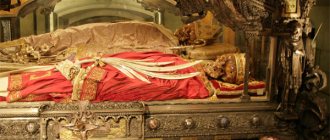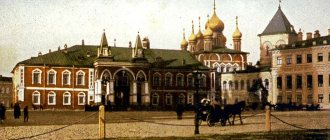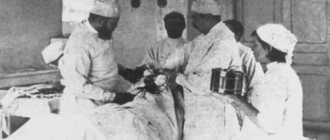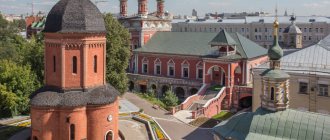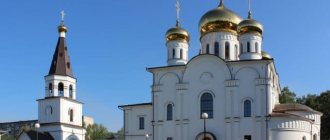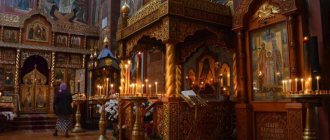On May 9 (April 26, Old Style) the Church celebrates the memory of St. Stephen, the enlightener of Perm, the apostle of the Zyryans.
“I pray to the Holy Trinity, consubstantial, indivisible, I ask for the gift: may He send His grace to me to help me, may He give me a word firmly, wisely and extensively, may it lift up my mind, burdened with despondency and dense stupidity, may it cleanse my heart, weakened by many scabs of mental harm and bodily passions, as if I were able to write something and praise the noble Stephen, preacher of the faith, and teacher of Perm, and heir to the apostles.”
Epiphanius the Wise
Life of Saint Stephen of Perm
Stefan of Perm was a prominent educator of the 14th century, so quite a lot of information has reached us about his life. And yet the main source is the life that came out after careful preparation from the pen of Epiphanius the Wise at the end of the 14th century: “And I found this and set out his life, collecting it here and there: I heard something in oral stories; I learned something from his students regarding his teaching and bishopric; I saw something else with my own eyes, and about other things I talked with him many times and learned from him; I asked the old husbands about other things.” Historians also use the texture presented in chronicles, folklore and tales. Of particular interest is the bone carving with scenes from life on the staff of St. Stephen.
Staff of St. Stefan of Perm. Perm Museum of Local Lore
The Life of Procopius of Ustyug says that for the sake of Christ, this holy fool predicted the birth of a holy son to Stephen’s three-year-old mother: “And many people come to the feast of the cathedral and apostolic church of her venerable Dormition, but the saint sits near the church on a stone, not standing up to anyone, without worshiping. A certain woman of that city, from her youth, walked alone, a certain man named Ivan, called Sekirin, and when the blessed one saw the said wife going to the church, she quickly stood up and said: “Go well: the born should be a ruler.” The same plot in the Ustyug chronicler sounds a little different: “At some time, blessed Procopius (the Ustyug wonderworker) was walking past the cathedral church during evening singing and saw a girl named Mary, three years old, bowed to her to the ground and spoke for everyone to hear: “this girl Mary is coming as the mother of Stephen, Bishop of Perm, teacher.” And when the people heard it, they began to marvel.”
Stefan was born approximately in 1340 in Veliky Ustyug. Historians know that he was called by the nickname Snoring. His father, Simeon, served in the main temple of Ustyug - in the Church of the Blessed Virgin Mary. The saint's mother's name was Mary. From a young age, it became clear that Stefan had extraordinary abilities: in just one year he learned to read and helped his father in church during divine services as a canonarch and reader. Soon young Stefan was tonsured a monk in the Rostov Monastery of Gregory the Theologian. This monastery was also known as the "Shutter". The young man chose it because it had a rich library: “...he took monastic vows in the city of Rostov in the monastery of St. Gregory the Theologian, in the so-called Shutter, near the bishopric, because there were many books there that he needed for reading, - under Bishop Parthenia of Rostov.” His biographer says that the newly tonsured monk began to study science with all the ardor. Stephen wanted to read the Holy Fathers in the original, and for this he learned Greek. During the years when he helped his father at the church, he closely communicated with the Zyryans (as the Komi people were then called). Now, having received a sufficient level of education, Stefan with all his heart wanted to convert the pagan Zyrians to Christ: “Wanting to gain greater intelligence, he mastered Greek literacy as a form of philosophy and mastered Greek books, and read them well, and always had them with him. And he knew how to speak three languages, and also knew three letters, namely: Russian, Greek and Perm.” Stephen's greatest interest was in the study of the Holy Scriptures. Epiphanius, who was personally acquainted with Stephen, says that he was not content with “poor teaching,” but preferred to “delay” “until he fully understood the truth.” Having met his bookish husband, he became his “co-questioner and interlocutor,” spending hours on end with him, “examining those he was looking for in a quick way.” Epiphanius, writing down his memories after the death of the saint, asks him for forgiveness for “being an annoyance to him, arguing with him about some word, or about a verse, or about a line.”
Be that as it may, Stefan soon begins to implement his long-conceived plan - he begins to educate the Zyryans. To do this, he develops the Zyryan alphabet, but not on the basis of the Slavic or Greek alphabets, but on the basis of the Zyryan runes - signs for notching on wood.
ABC of Stefan of Perm
In his bold undertaking, Stephen encounters many obstacles, because “these meager minds,” as Epiphanius puts it, objected to Stephen: “Now, when the years end, in the last days, at the end of the seventh thousand, for the sake of such a short time, only for 120 years until the end of time, to invent literacy? (The end of the world was expected in 7000, that is, in 1492 A.D.). Stefan translates the Holy Scriptures and liturgical books into the Zyryan language. Later he also translated the liturgy. This work is completed by 1378-79, after which he immediately goes to Moscow to receive a blessing for a mission in Perm. In Moscow, Stefan receives the blessing of the highest hierarch of the Russian Church - locum tenens Michael (Mitya), who occupied the throne after the death of St. Alexis - and goes “like a sheep in the midst of wolves” to the wild land of the pagans, after Bishop Gerasim of Kolomna ordained him priest. So that the Moscow trail does not compromise his preaching, Stefan goes to the Zyryans alone or with just a few companions. The successes of his preaching are recorded in narratives that remarkably characterize the naive but naturally good worldview of the Zyryans. First we see Stephen in a circle of already baptized disciples. They come to him and ask different questions. However, sometimes the unbaptized also come. They stand around with “blinds”, want to kill him, or “burn the servant of God” with straw. Soon Stefan himself begins to destroy their idols and idols. When he burned down their “deliberate idol,” many pagan Zyryans came with stakes and axes. Stephen preaches to them, while at the same time preparing for inevitable death. However, no one dares to attack him. The charm of his personality captivates the local people, who are very meek by nature. And yet the missionary endured many hardships and sorrows, living among the pagans who worshiped idols: “fire, water, trees, stone and the golden woman, and the magician, and the magician, and the tree.”
The Zyryans were especially in awe of the so-called “prokuda” (according to Dahl, “prokuda” is a stupid trick, damage, harm). This gigantic birch grew on a hill. The Zyryans came to this place and sacrificed animals caught in the hunt. Saint Stephen built himself a cell near this place and every time the superstitious Zyryans came there, he preached Christ to them. Then the saint simply cut down and burned the birch tree, and the Zyryans almost killed him for this. Stephen said this to them:
“Judge for yourselves, are your gods strong when they cannot protect themselves from fire? Are they gods when they are so weak and lack not only sense, but also hearing and sight? And your deity was unable to protect itself from me, the weak one. Are not all your other gods like this? This is not the Christian God. He sees everything, knows everything and is Almighty, for he created the whole world and provides for everything. And how good He is, especially to those who know Him! I wish you well by preaching the True God to you. He will love you and do good to you when you begin to honor Him sincerely.”
In the place of the “weedy birch” the saint erected the Church of the Archangel Michael, the shamer of demons, and arranged it in such a way that the stump from it served as a throne in this church.
Stefan Permsky cuts down a foul birch tree
The Annunciation Church, located in the main Zyryansk village, also preached Christianity. Stefan decorated it “like a good bride” - all the church utensils were brought from Moscow. The unbaptized also came here. These came not to pray, but to admire “the beauty and kindness of the church building.” That church itself preached with its splendor. The Zyryans were completely delighted, just like the ambassadors of Prince Vladimir to Hagia Sophia in their time. Stefan taught all the baptized people the literacy he had created, taught them to read the Book of Hours, the Psalter and “other books.” Depending on their successes, he promoted some to priests, some to deacons, some to readers or singers: “and write, teach them Perm books, and help them himself.” Thus, the spark of Christ's faith, which flared up in the cold northern region, soon ignited a bright center of Christian culture. Thus, the scientist Stephen, filled with the Holy Spirit, carries his wonderful science into the impenetrable wilds of primeval dense forests.
The culmination of Stefan’s missionary exploits was a dispute with Pam the centurion, the Zyryansk ruler, whom Epiphanius calls “a famous magician, leader of the magicians, and elder of the healers.” Pam proposed to resolve the dispute about the truth of faith with two tests: Stefan and Pam should have walked together through a burning hut, and also descended into one ice hole on the Vychegda River, swam under the ice, and climbed through another. Pam, seeing his opponent’s complete readiness, shamefully refuses the tests, although he himself proposed them. The indignant Zyryans gave him to the holy bishop with the words: “Take him and execute him, because he is subject to execution and, according to our old custom, must die,” however, the wise Stefan lets Pam go, elegantly emerging from the duel imposed on him as an absolute triumphant and thus overcoming the last obstacle to the Christianization of Minor Perm. In gratitude to the Lord for the victory over the leader of the pagans, Stefan built the Church of St. Nicholas on Vishera. After this, the saint’s preaching becomes more and more successful.
Library of the Russian Faith Life of St. Stephen of Perm. Great Menaion of Cheti →
Read online in original
Although his biographer does not follow the spread of the Christian faith in this northern region, we know that under Stefan the Zyryans built many churches and at least several centers of Christian colonization - monasteries: Spasskaya Ulyanovsk hermitage 165 versts from Ust-Sysolsk , Stefanovskaya - 60 versts from Ust-Sysolsk, Ust-Vymskaya Arkhangelsk, Yarengskaya Arkhangelsk.
Icons painted by Stephen's hand are also preserved. The most famous of them is the “Zyryan Trinity” with an extensive inscription in the Stefanov alphabet in the Komi language.
St. Stefan Permsky. Zyryan Trinity. 1379-1400 VGIAHMZ. Vologda
ABC of the Permian language, fragment of the Zyryan Trinity icon
The legend about the correspondence meeting between Stefan of Perm and Sergius of Radonezh
Touching is the “absentee meeting” of Stephen of Perm with the Monk Sergius of Radonezh, which happened in 1390 during the saint’s trip to Moscow on church affairs. The saint loved the Radonezh miracle worker very much and with all his heart longed to see him on the way from the Perm land, but could not do this due to lack of time. Being 10 miles from the monastery of St. Sergius, Saint Stephen, having prayed, turned towards the monastery and said with a bow: “Peace be with you, spiritual brother!” The Monk Sergius, who was at that moment with the brethren at the meal, stood up, prayed and, bowing in the direction where the saint was passing, answered: “Rejoice, you too, shepherd of the flock of Christ, and may the peace of God be with you!”
The turning point in the lives of all Zyryans occurred when Stefan disgraced the chief priest
The final turning point in the lives of all the Zyryans occurred when Stefan shamed their most important priest, who rebelled against the spread of another faith. The priest told Stephen that Christians have one God, and they have helpers both on land and on water.
To which Stefan answered him that there is one True God, and one omnipotence, and the powerlessness of the idol gods is visible from experience. After a long conversation, the idol decides to go through fire and water to prove his faith. He demanded the same from Stefan. “...I do not command the elements,” Saint Stephen humbly answered, “but the Christian God is great: I am going with you.”
Then he prayed, took the priest by the hand to go into the fire, but the priest immediately got scared and began to beg Stefan to save him from this. “...You are witnesses,” Saint Stephen said to the assembled people, “he himself demanded that the dispute about faith be resolved by fire and water and, however, does not want to be baptized. Who should we consider Pama to be now? What to do with him?".
The final turning point in the lives of all the Zyryans occurred when Stefan shamed their most important priest, who rebelled against the spread of another faith
The people decided to put the deceiver to death. But Saint Stephen said that the Lord did not send him to put him to death, but to teach. The priest was expelled from the Perm land. In honor of the victory over the priest, Stephen built a temple in honor of St. Nicholas.
Much of the Holy Scripture was translated into the Zyryan language by Stefan of Perm. Many people read holy books from the Komi language. During crop failure, the saint supplied the Zyryans with bread and many times saved people from violence.
Veneration and glorification of St. Stephen of Perm
In the spring of 1396, the bishop again went to Moscow, where he fell ill and died suddenly. By order of Prince Vasily Dmitrievich, he was buried in the monastery of the Savior Behind the Wall in the Church on Bor in honor of the Savior in the Moscow Kremlin, next to the graves of members of the Moscow princely house. This speaks of special respect for the Perm saint. According to the Trinity Chronicle, Stephen of Perm was revered as a saint immediately after his death, although his official church-wide veneration began only after the Council of Makariev in 1549. In 1933, the Church of the Savior on Bor was demolished, and the relics of St. Stephen were lost.
In the second half of the 15th century, based on the “Life of Stephen of Perm,” written by Epiphanius the Wise, who personally knew the bishop, the Service to the Saint was written, authored by Pachomius Logothetes.
So, in the crucial 14th century for the Russian state, when Moscow, in the process of collecting lands, turned its attention to the North, it was Bishop Stefan of Perm who became the conductor of Russian influence in new territories.
One day Stefan went to Bishop Gerasim for a blessing to serve the pagans
Afterwards, the saint of the Perm land went to Moscow to see Bishop Gerasim of Kolomna, who then managed the affairs of the metropolis. When Stefan arrived at the place, he asked to bless him to serve in the pagan country of Perm. He expressed a desire to bring all unfaithful people to the faith of Christ.
Stefan said to Bishop Gerasim:
“...I decided to either lead them to Christ, or lay down their heads for Christ...”
The bishop joyfully blessed him for service, ordaining him to the rank of hieromonk. Taking myrrh and liturgical books with him, and also receiving letters of safe conduct from Prince Dmitry Ioannovich, Stefan set off.
Stefan Permsky cuts down a foul birch tree
From Veliky Ustyug he went down to the Northern Valley, where the Zyryan settlement began. He had to endure a lot of work, struggle and sorrow on this earth, among paganism, which worshiped various gods. The Zyryans especially worshiped the “sweet birch tree.” This birch grew on a high, elevated place.
Troparion, kontakion and canon to St. Stephen of Perm
Troparion, tone 4:
With a divine desire from his youth, Stephen the Wise, he was kindled with the yoke of Christ, and people who were frozen in ancient times with unbelief of the heart, the Divine seed was all in them, you gave birth spiritually in the Gospel. In the same way, we honor your glorious memory, we pray to you: pray, Whom you preached, that our souls may be saved.
Kontakion, tone 8:
Self-proclaimed by those who do not seek you, saint, you found people freed from idolatry, and you brought them to the faith of Christ, and you put the sorcerer Pan Centurion to shame, and you also became the first bishop and teacher of Perm. For this reason, the spiritual child, who has been delivered from idols by you, is grateful to you with a cry: Rejoice, Stephen, wise teacher.
Library of the Russian Faith Canon to St. Stephen of Perm →
Read online
Saint Stephen of Perm. Icons
"Bogolyubskaya" with selected saints. Three-leaf folding. Left wing: Moscow Saints Alexy, Cyprian, Philip and Stephen of Perm. Istoma Savin. Icon. Moscow. End of the 16th – beginning of the 17th century.
Minea April (fragment). Rus. Beginning of the 17th century Church-Archaeological Cabinet of the Moscow Theological Academy
St. Stephen of Perm. Miniature of the Front Life of St. Sergius. End of the 16th century RSL. Moscow
Stefan of Perm, with his life. Third quarter of the 17th century. Vologda State Historical, Architectural and Art Museum-Reserve
St. Stephen of Perm. Fragment of the Hodegetria icon with St. icon painters in the fields. Konyushevsky A.V. Sergiev Posad. 1999
Saint Stephen of Perm. Modern icon
God shows the way
– 2007. A month later I was summoned to the Kremlin. Vladimir Vladimirovich’s assistant Igor Shchegolev, he worked in the administration then and is now the President’s representative in the Central District, says: “The President instructed me to issue you permission to conduct research in the Kremlin. Vladimir Vladimirovich believes that if there is any opportunity to find the relics, he only supports it.” And he gives me a schedule for four months: here is one week, here is another, here are some days - this is the time when the President will not be in the Grand Kremlin Palace, and in these you can dig. But in those days when the President was there, everything had to be returned to its previous form. So that it would be completely unnoticeable that they were digging.
That's it, the issue is resolved. And before that I had help from St. Stephen, and then it became simply obvious. I went to the commandant of the Kremlin, Lieutenant General Sergei Dmitrievich Khlebnikov (by the way, under him, on the Spasskaya and Nikolskaya towers of the Kremlin, the gate icons, which were considered lost, were unwalled in icon cases - I.I. ). He put down the tea: “Father, I come from Perm, Stefan is a significant figure for me. What a great guy you are! Are you also from Perm?” - “No, I’m from Penza.” - “How did this happen?” - “This is my favorite saint. I was born on his memorial day, May 9. They named me Vladimir. When I grew up, I asked my parents why they named me Vladimir and not Stepan, because my grandfather was the priest Stefan. “You know,” they told me, “your grandfather the priest was shot in 1937, when he was 52, and uncle Vladimir lived until he was ninety. And we thought: let the son be Vladimir and live longer.” The logic is so normal, right? And all my life I pray like this: “Vladimir and Stefan, pray to God for me.” - “Well, great, I’ve already given orders to everyone here, now the commandant of the Grand Kremlin Palace Nikolai Alexandrovich will come, help, find people...”
“Nikolai Aleksandrovich Demin came, he is now retired,” my interlocutor continues the story. – He accepts me as if he were his own: “I’ll help you, just tell me what you need.” It was my grandfather who sent you to me.” And shows me the family Bible. So fat. On one of the sheets it is written: “As a sign of gratitude about the conversations that we had in the transit prison in Penza.” A priest from Penza writes to his grandfather. Such and such a priest, signature, date. Amazing!
“Actually, I have Orenburg roots,” Father Vladimir makes a retreat. “But when my grandfather was shot, everyone left: one of his sons went to Penza, and the other to Nizhny Novgorod, one daughter went to Tashkent, the other to Kursk. They separated and changed their names. My father just didn't change. Became an artist.
